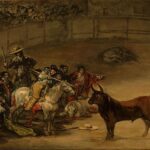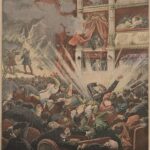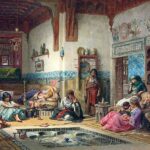Caroline Earle White
Caroline Earle is most widely known for is [delete is] her work in early animal rights advocacy, and specifically the founding of the women’s branch of the Pennsylvania Society for the Prevention of Cruelty to Animals in 1869 as well as the American Anti-Vivisection Society in 1883, which opposed medical experimentation using animals. [this sentence is too long, consider breaking in two] After becoming a member organization of the National Council of Women in 1894, AAVS became more closely connected to the broader women’s right’s movement but did not go so far as explicitly supporting suffrage. Beyond advocacy, White also had a successful writing career, publishing fiction such as the romance “Loves in the Tropics” [book titles should be italic without quotation marks] and the short story collection “Modern Agrippa and Patience Barker” [same].

Themes
Add more quotes for each theme. Write a paragraph introducing each theme. Use secondary sources.
“It is almost inconceivable that any amusement involving such horrible cruelty [such as bullfighting], should be so popular with a people who seem, as a general thing, kind and gentle, but so it is.” (p.47)
“After leaving the jail [in Tangier, Morrocco] we rode onto a hill which gave us a fine view of the city, and then descended to the seashore, where the setting sun gilding the tops of some of the hills on the opposite side of the bay, and leaving others in shadow while it cast a rosy light on the softly lapping waves of the Mediterranean, made a picture which filled us with delight.” (pp.37-38)
“The food and cooking in most of [the hotels] are poor, according to American ideas. We should sometimes have found it difficult to take enough to satisfy our hunger, had it not been for the oranges which were always on the table at the dejeuner and dinner, and which were, as a general thing, delicious” (p.63).
“The Spanish women generally, that we have seen, have not impressed us in the way of looks. They have very little expression or play of feature, and that little they lessen by covering their faces with powder.” (p.55)
“We went, one day, to the great tobacco factory of Seville. It gives occupation to six thousand women and girls, although some of them, we are told, are very poorly paid. Many of them are mothers, and take their babies or young children with them to the factory.”(p.54)
"Only the ladies of our party were allowed to enter here...They were dressed the Eastern costume, with sashes very low down around their waists, and some soft white stuff around their heads. Their apartments consisted of several rooms around an open court-yard, all with beautifully tessellated floors in different colored stone." -- Excellent: image and quote
Image: “La Conteuse Nubienne au Harem” by Frederick Arthur Bridgman (1875)
Places Visited
Add explanatory paragraph for each location, even if it repeats/paraphrases StoryMap.
[Barcelona] is the most prosperous city of the kingdom, and most resembles one of our American towns in the bustle and air of business which pervade the community.” (p.7)
“Every American should come to Tangier if he wishes to see the exact opposite of everything that he has ever beheld or known all his life before…There no road either or around the city, consequently such thing as carriage unknown…Through these narrow streets, particularly the principal one of the town, pours a motley assemblage of Moors in coarse, light cotton garments, with their faces covered up excepting the eyes, negroes, Jews, Europeans, and Americans, horses, mules, donkeys, camels, and dogs, all mixed up in inextricable confusion.” (pp.30-31)
“The poverty and dirt and squalor are indescribable, and yet, in spite of it all, there is a picturesqueness and air of romance and a glamour that can be found nowhere but in the East.” (p.37)
“This is one of the most interesting cities of Spain, and we have found so much to see…we have been told that nowhere in Spain, indeed, nowhere in the whole world, is Corpus Christi celebrated as it is here. There is a wonderfully curious ceremony, which is to be seen nowhere but here—a dance by the young men and boys of the choir, which is to take place after mass, and when this is over there is to be a grand procession through the principal streets of the city.” (pp.44-45)
“All the Spanish cities we had hitherto seen had been more or less of the same type…but we found, to our surprise, Madrid entirely different. The streets are as remarkably wide as those of the other cities are narrow… it is very handsome, but did not interest us greatly.” (pp.58-59)
"It is almost inconceivable that any amusement involving such horrible cruelty should be so popular with people who seem, as a general thing, kind and gentle.” -- Awesome
Image: “Suerta de Vargas” by Francisco de Goya (1824)
Primary Sources
You can add her fictional work here.
Secondary Sources
Very good. Change the icons so they all look like the first one.
- Sukko Kim, Division of labor and the rise of cities: evidence from US industrialization, 1850–1880
- Miguel-Anxo Murado, When Terror Came to Barcelona
- John Lawrence Tone, War and genocide in Cuba, 1895-1898
- Cynthia Enloe, Bananas, beaches & bases : making feminist sense of international politics
- Emily M. Weeks, Multiple Wives, Multiple Pleasures: Representing the Harem, 1800-1875
- Ilene Susan Fort, Frederick Arthur Bridgman and the American fascination with the exotic Near East. (Volumes I and II)
- Frank I. Heckes, Goya's "Tauromaquia" A Criticism of Bullfighting?



